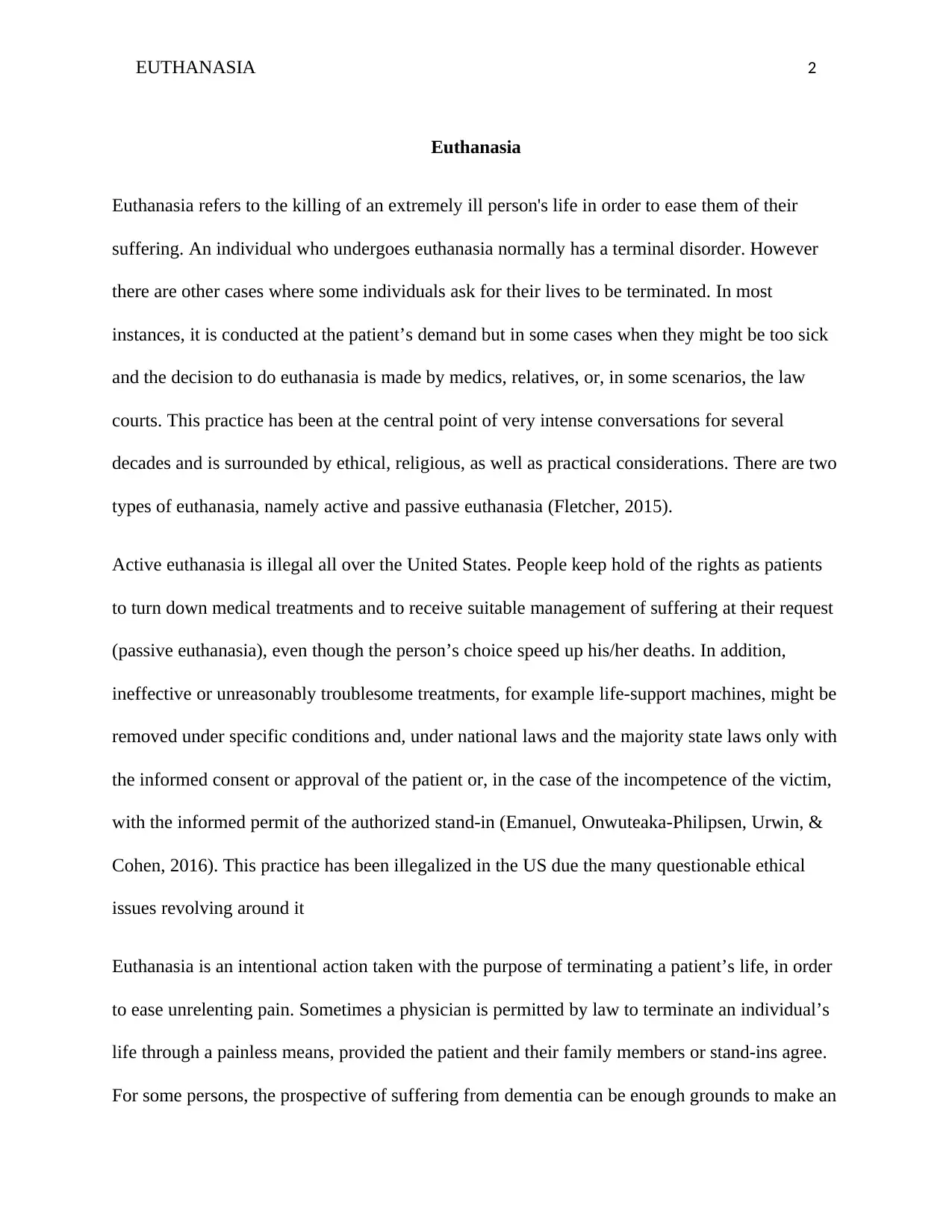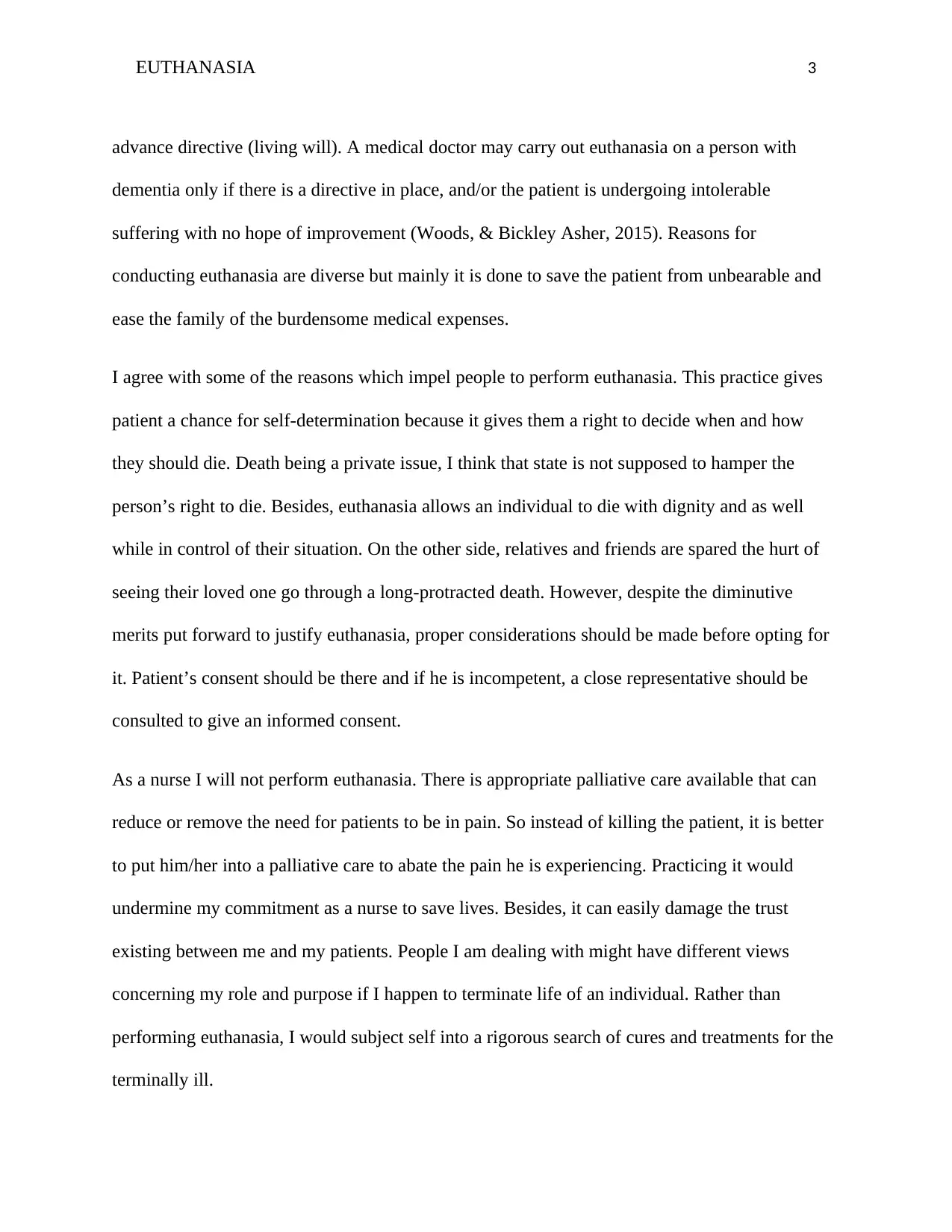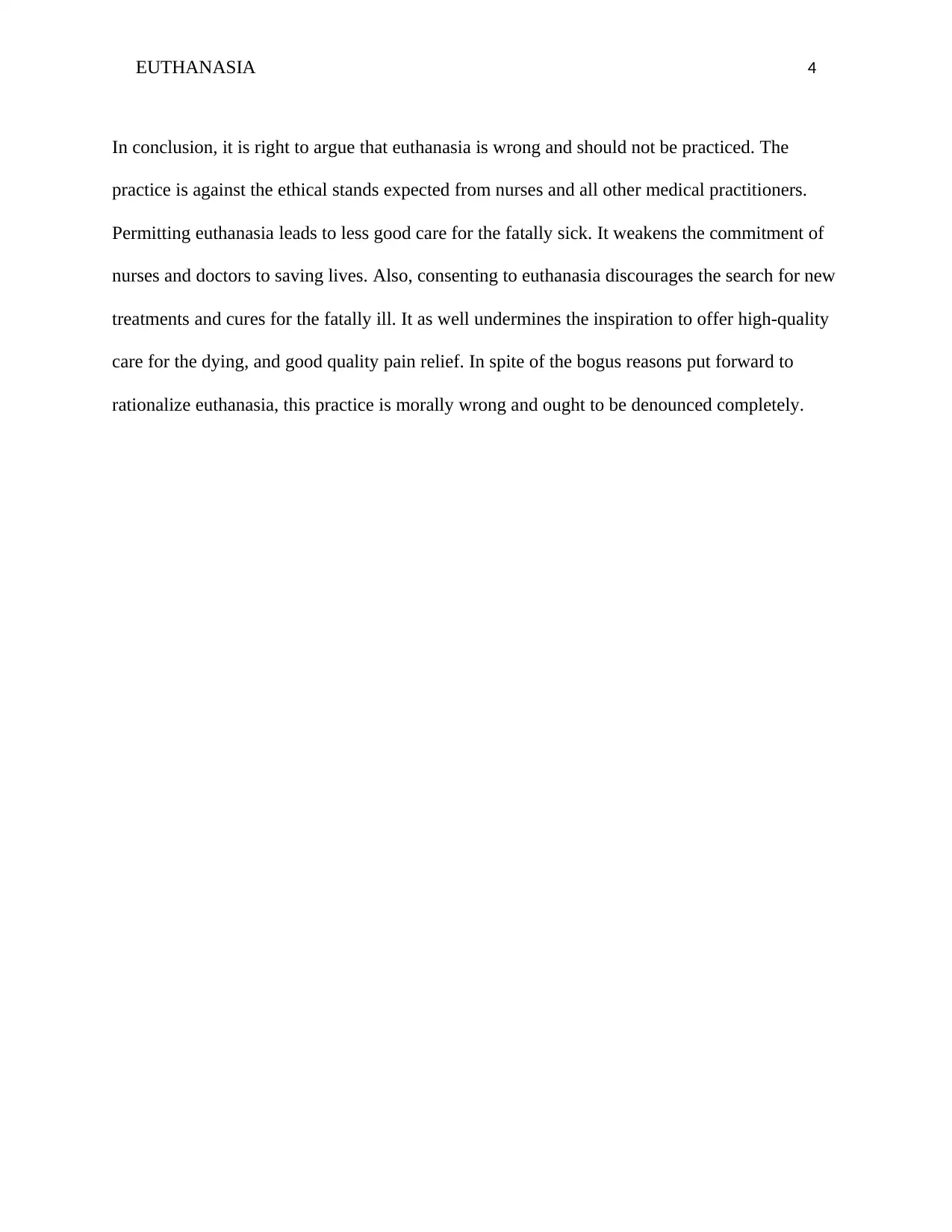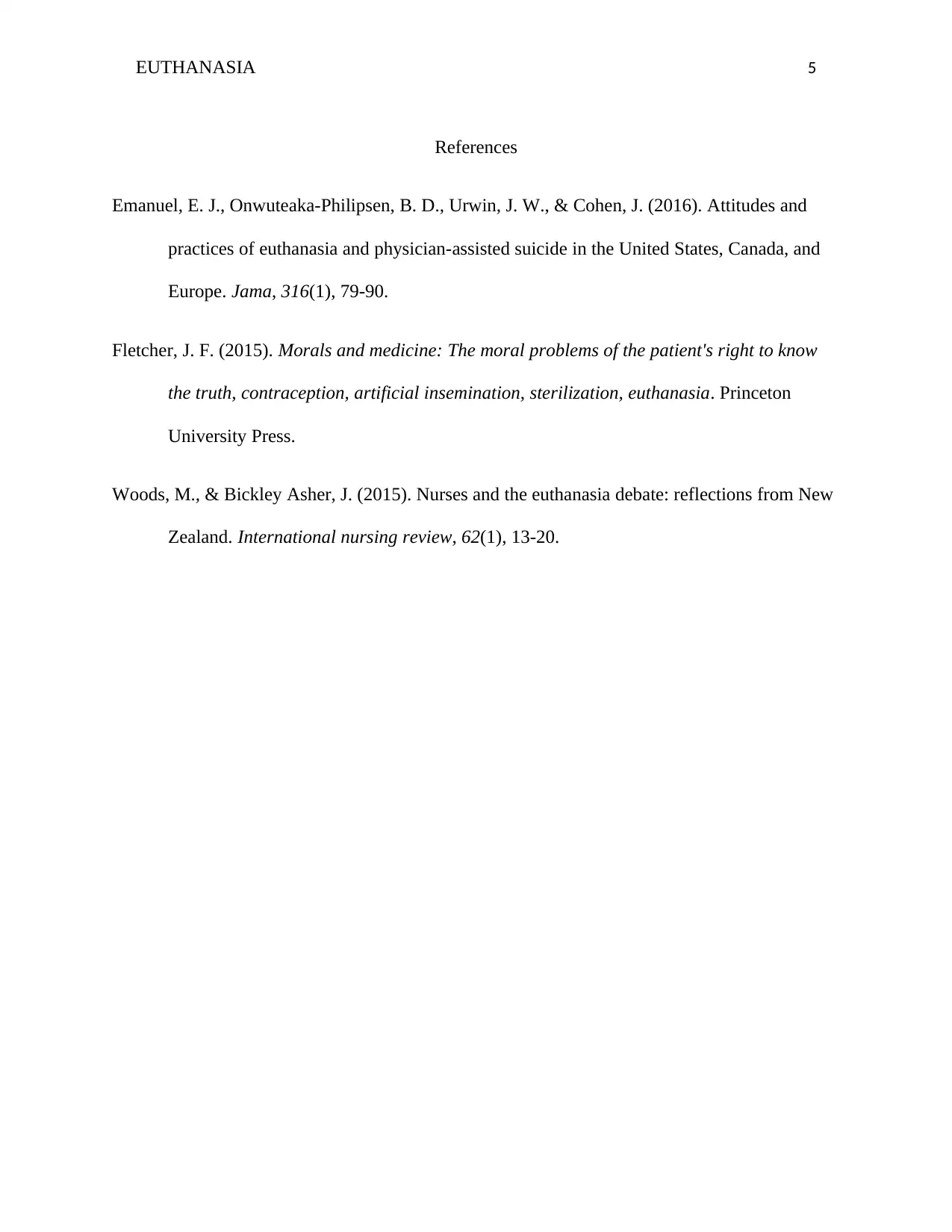Euthanasia: Ethical, Legal, and Nursing Considerations in Healthcare
VerifiedAdded on 2023/01/11
|5
|971
|50
Essay
AI Summary
This essay delves into the multifaceted issue of euthanasia, defining it as the intentional termination of a life to alleviate suffering, primarily in cases of terminal illness. It differentiates between active and passive euthanasia, highlighting the legal status in the United States. The essay explores ethical considerations, religious perspectives, and practical challenges surrounding euthanasia, acknowledging the patient's right to refuse treatment. It discusses the roles of medical professionals, especially nurses, in end-of-life care, emphasizing the importance of palliative care as an alternative to euthanasia. The author, as a nurse, expresses a commitment to preserving life and upholding ethical standards, emphasizing the potential damage to patient trust and the importance of seeking cures and treatments. The essay concludes by arguing against euthanasia, citing its contradiction with nursing ethics, its potential to diminish care quality, and its discouragement of research for cures.
1 out of 5











![[object Object]](/_next/static/media/star-bottom.7253800d.svg)